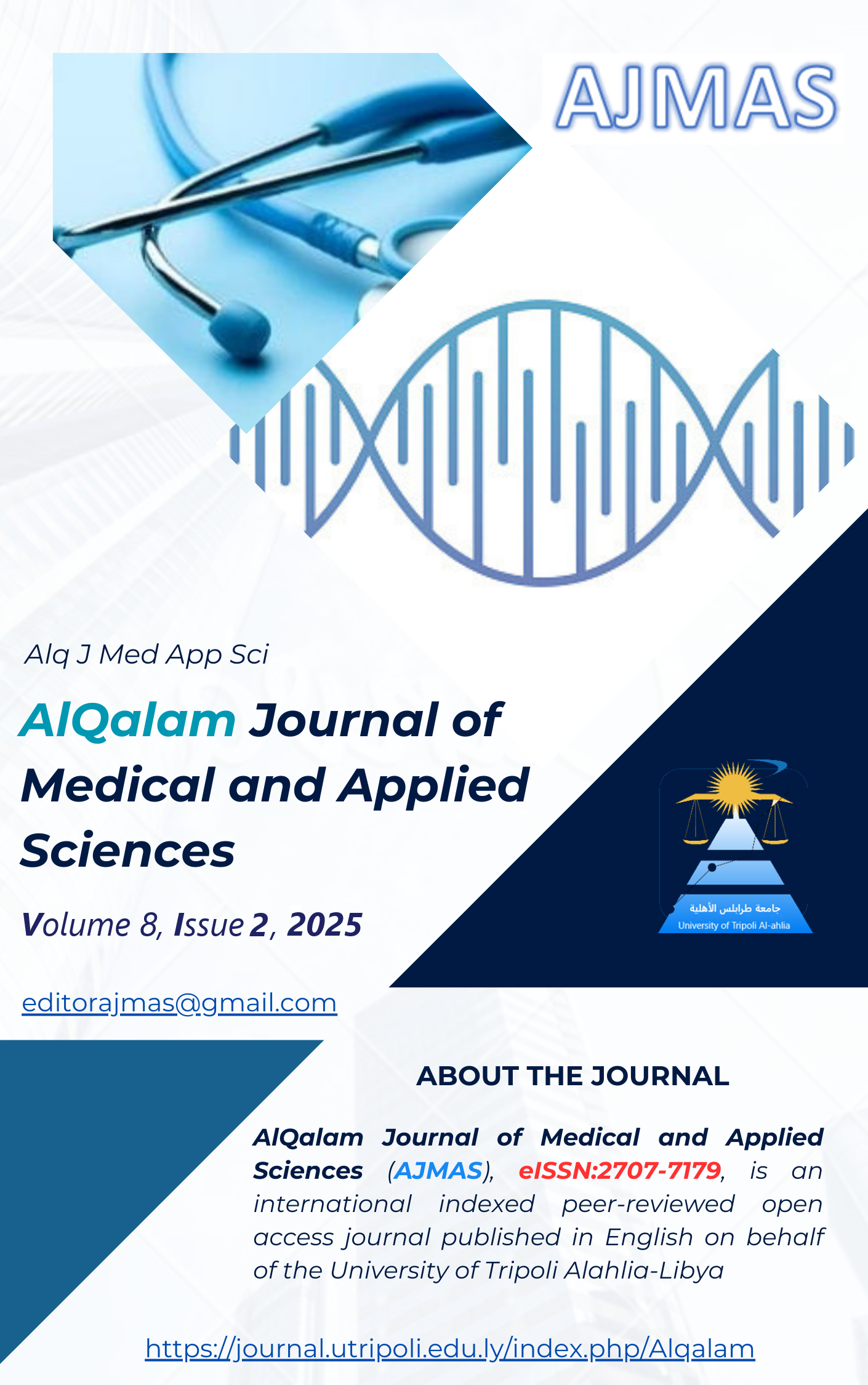Management of Mandibular Angle Fracture: Comparative Outcomes of Surgical vs. Conservative Approaches in Libya
DOI:
https://doi.org/10.54361/ajmas.258279Keywords:
Mandibular Angle Fracture, Intermaxillary Fixation, Open Reduction and Internal Fixation.Abstract
This study compares outcomes between surgical (open reduction and internal fixation [ORIF]) and conservative (intermaxillary fixation [IMF]) management approaches for mandibular angle fractures. A five-year multicenter retrospective analysis (2015-2019) was conducted on 64 patients treated across various hospitals in Western Libya. Patient demographics, fracture etiology, treatment modalities, healing duration, and complications were systematically evaluated. The results revealed that assaults/fights (56.3%) represented the predominant etiology, with males aged 20-29 years most frequently affected (71.9% male *p*=0.02 vs. females). Conservative treatment with IMF demonstrated superior healing rates, with 96.8% of cases achieving union within 9 weeks versus 57.58% for surgical interventions ORIF (*p*<0.001, x2 test). The overall complication rate was 10.9% (abscess formation and delayed union), with no statistically significant difference between the IMF (9.7%) and ORIF (12.1%) groups (p*=0.74). These findings suggest that fracture line characteristics (favorable versus unfavorable) should be the primary predictor of treatment success (*OR*=4.2, 95%CI: 1.8-9.3). IMF is optimal for stable, non-displaced fractures, while ORIF remains indicated for displaced /unstable patterns. The study provides evidence-based guidance for clinical decision-making in mandibular angle fracture management. Limitations include retrospective design and single-region data.
Downloads
Published
How to Cite
Issue
Section
License
Copyright (c) 2025 Ayad Alkhalifi, Nagia Bengharbia, Areej Alkhalifi, Saleh

This work is licensed under a Creative Commons Attribution 4.0 International License.















